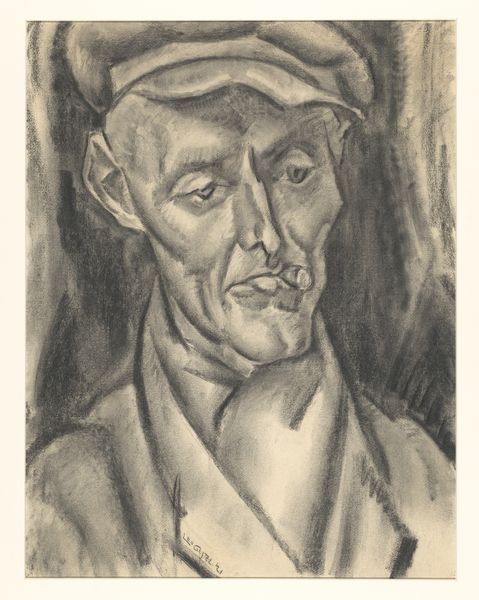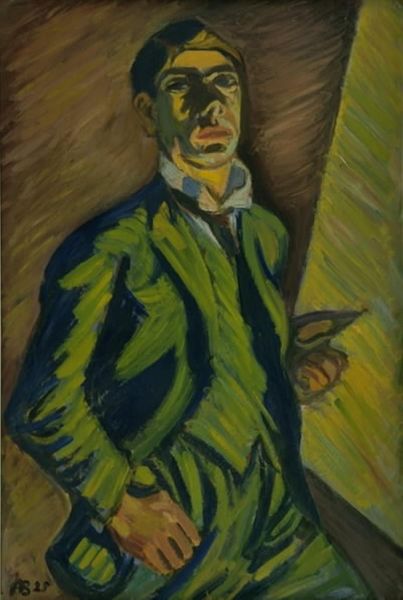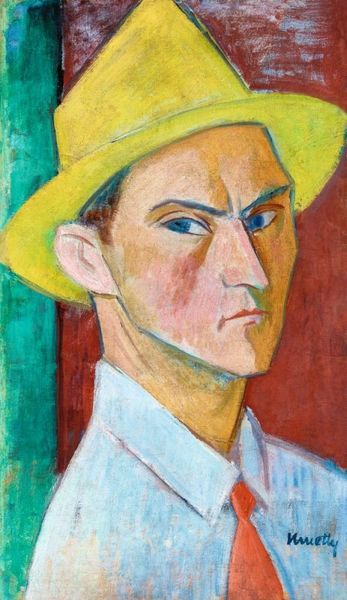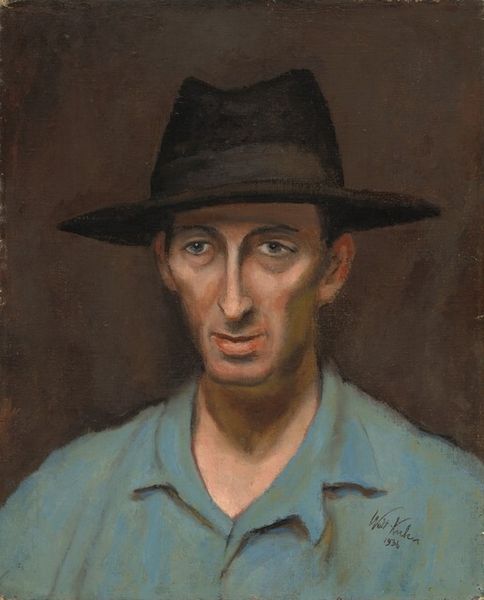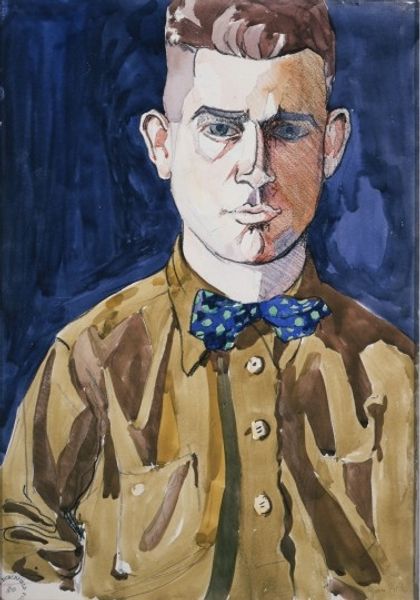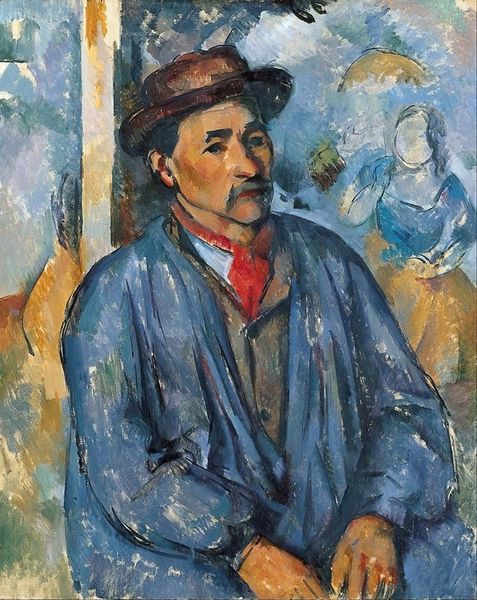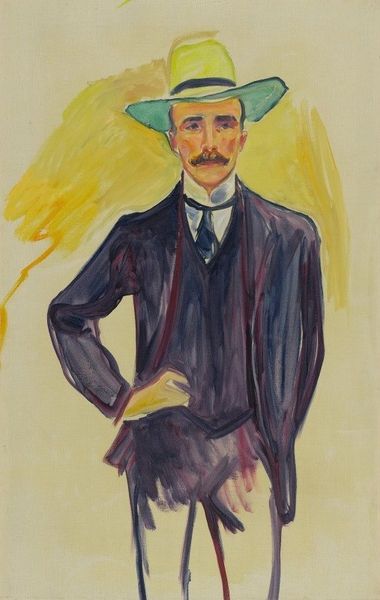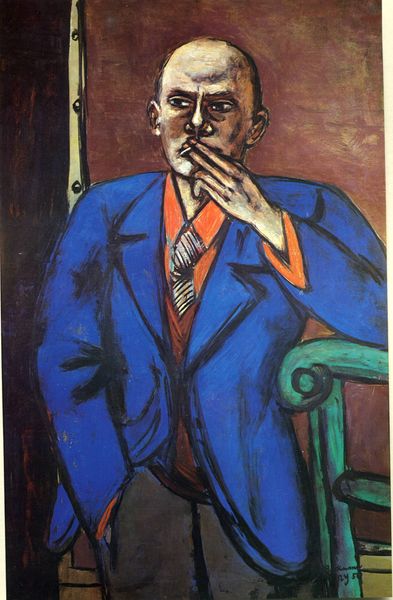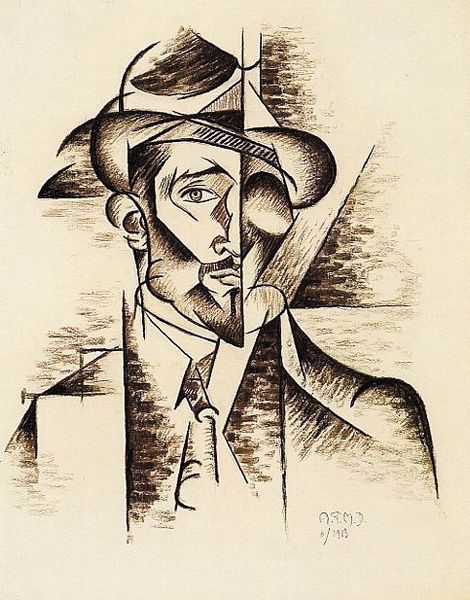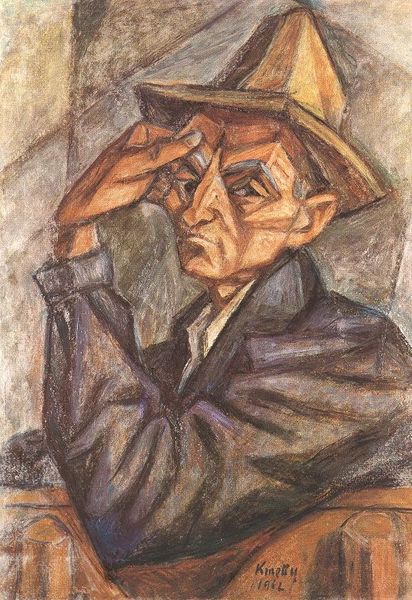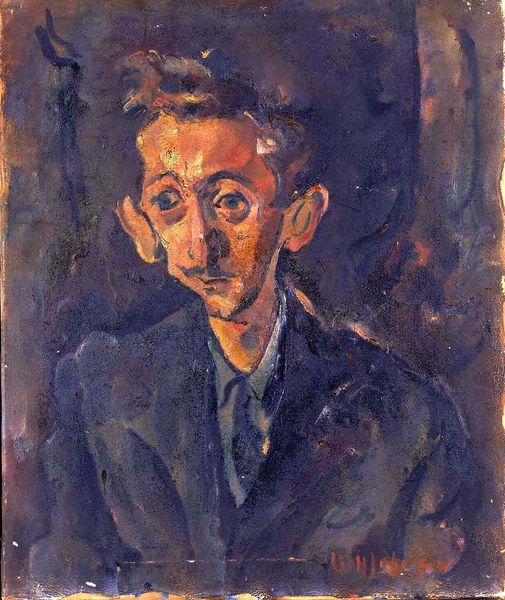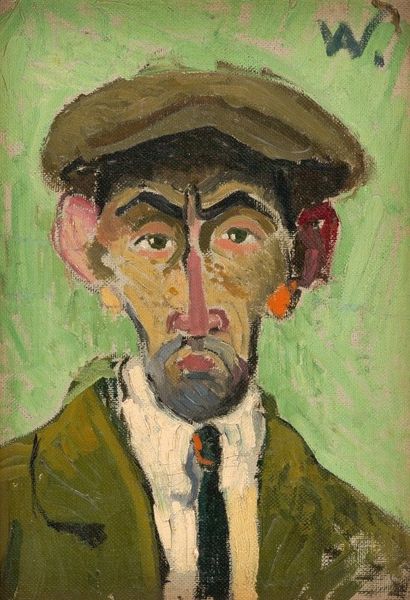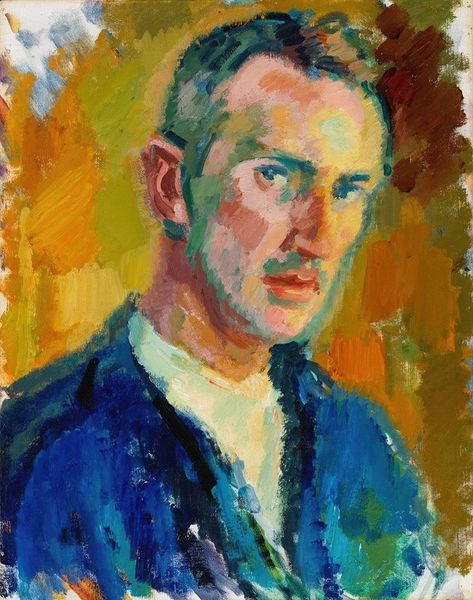
oil-paint
#
portrait
#
self-portrait
#
portrait
#
oil-paint
#
german-expressionism
#
figuration
#
expressionism
#
modernism
Copyright: Public domain US
Editor: This is Max Pechstein’s "Self-Portrait with Pipe and Hat," painted in 1918 using oil paint. The vivid colors are immediately striking, and yet there's also something unsettling about the gaze. What symbols do you see at play here? Curator: The pipe, the hat…these aren’t just accessories. They're calculated symbols, signaling something about the artist's self-perception. What does the pipe evoke for you? Editor: Sophistication, perhaps? Comfort? I see him projecting an image of a man at ease, but his eyes tell a different story. Curator: Precisely. The pipe is almost a mask, deflecting attention from the anxiety in his eyes. Look at the colors—the unnatural greens and reds on his face. They’re exaggerating certain emotions, turning them into symbolic markers of internal turmoil. This distortion, what does it say to you about his state of mind? Editor: That he's struggling, maybe? The colors almost feel like a fever dream, externalizing internal conflict. It's like he's trying to hide behind these constructed symbols, but his unease seeps through. Curator: Absolutely. And consider the context—1918, the end of the First World War. The self-portrait transcends mere depiction, becoming an emblem of post-war disillusionment and existential questioning. It taps into cultural memory through visual symbols. Editor: So it's not just a portrait of a man, but of an era grappling with its own identity. I never considered how deeply personal effects like a pipe can function as symbols loaded with history and emotional weight. Curator: Exactly. Art allows cultural anxieties to speak without words, leaving space for individual emotional processing and social reflection.
Comments
No comments
Be the first to comment and join the conversation on the ultimate creative platform.

